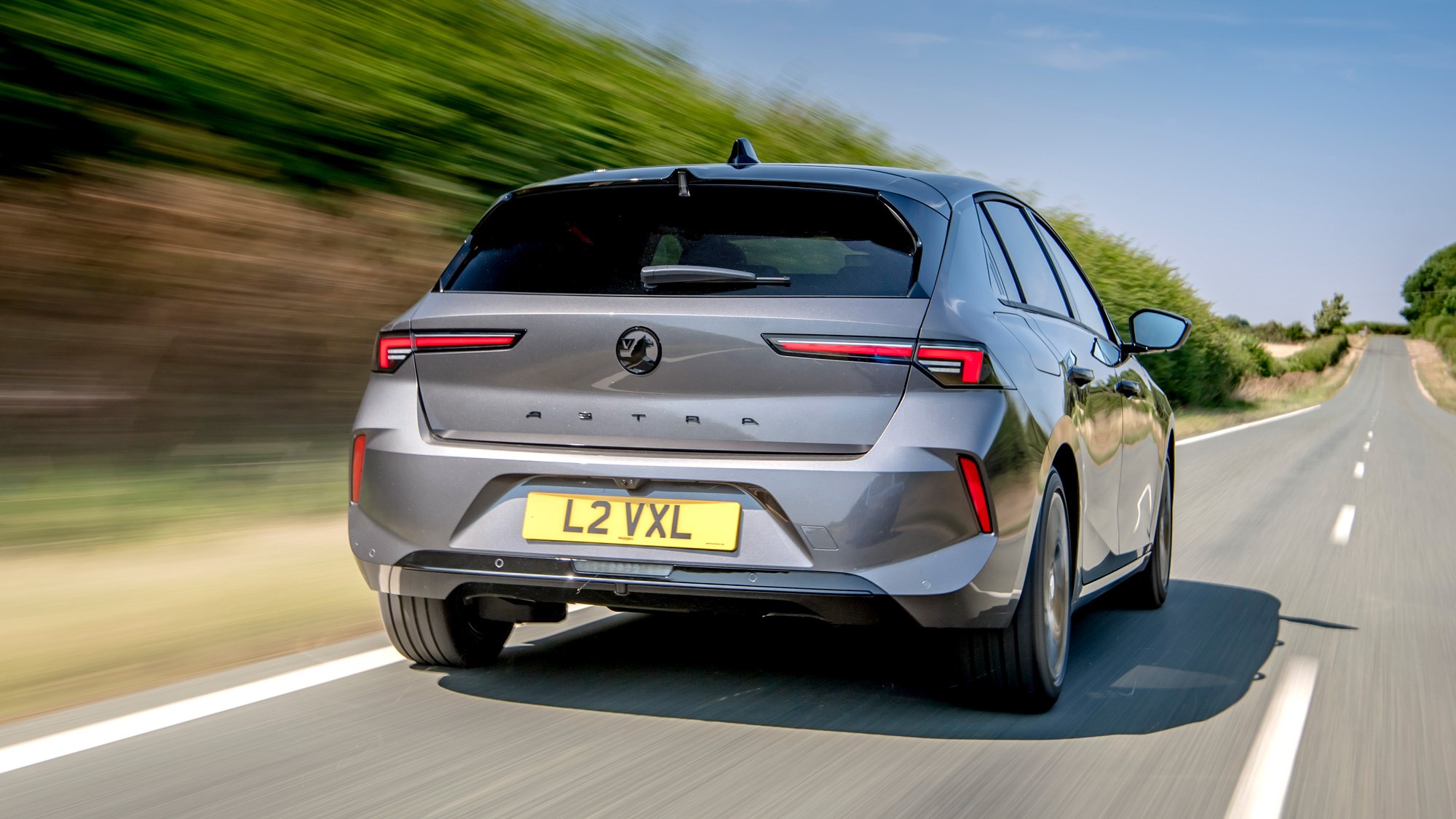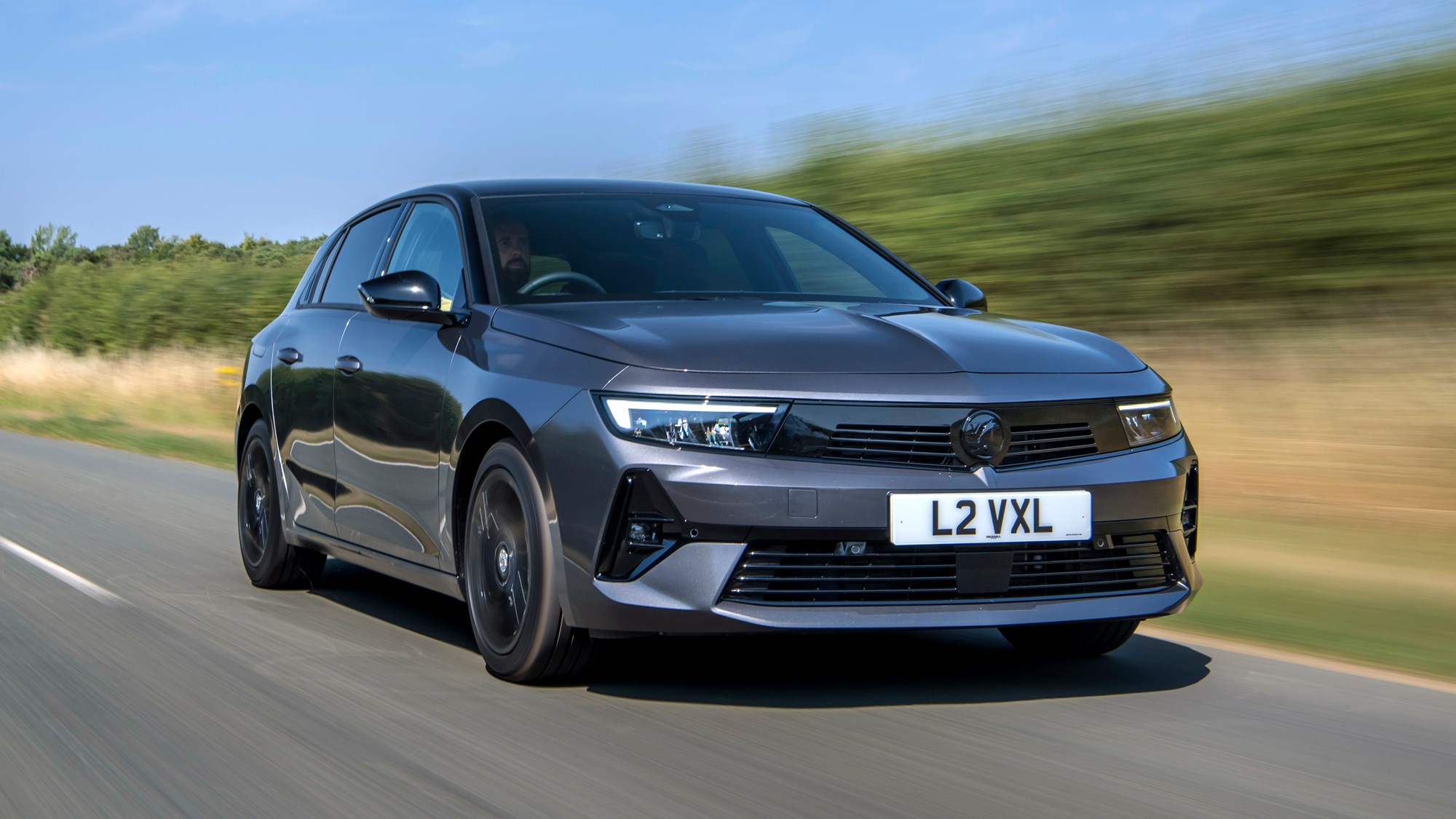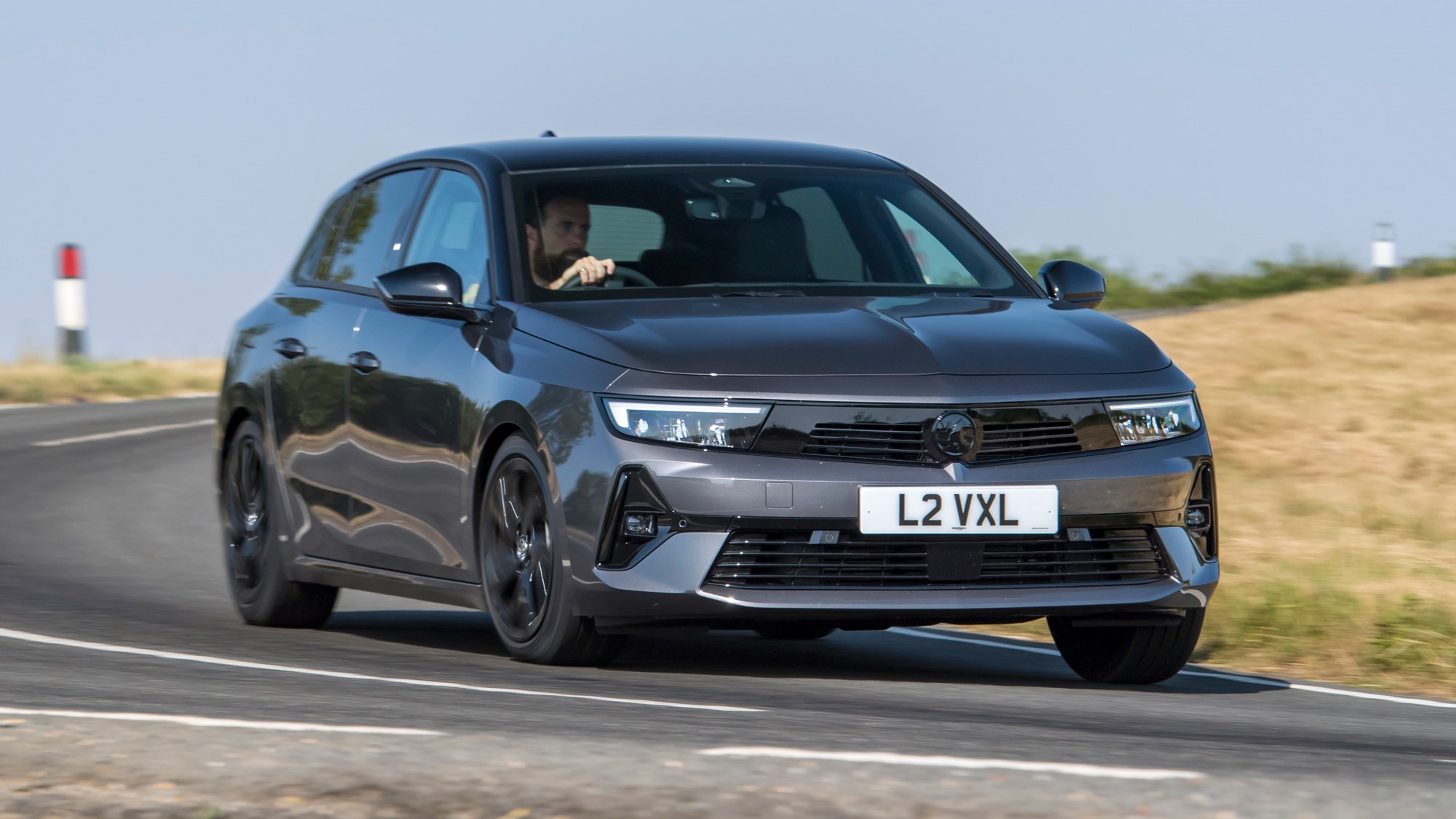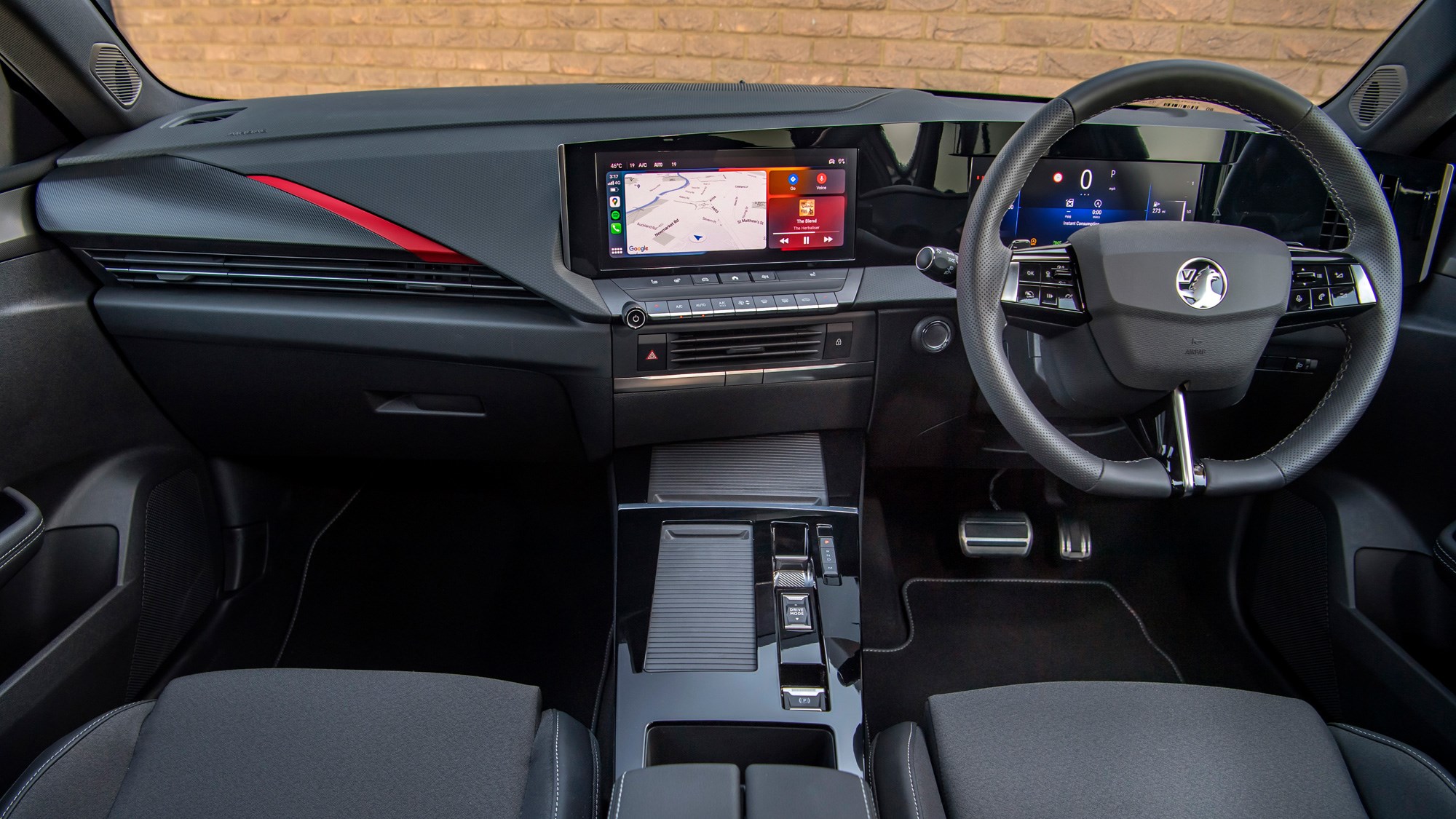► New Vauxhall Astra hatch driven in the UK
► On sale now from £24,315
► EV model due for launch in 2023
The Astra is an important car for Vauxhall. It’s the first all-new model the brand has launched since it was absorbed into the Stellantis supergroup – and it’s wading into a very competitive market. Vauxhall has recognised this, though, and its engineers have pulled their socks up for the new car. They’ve turned the Astra into a properly desirable hatchback – it looks fantastic, handles well and features a generous amount of standard equipment. It’s available with several in impressive powertrains, including a hybrid variant, too.
Simply put, it’s more than a match for the best on the market, and an encouraging indication of where Stellantis is heading as a company. Vauxhall has some ground to make up in the family hatchback segment. The previous Astra wasn’t exactly class-leading when it was pulled from the showrooms in late 2021 – newer rivals offered more engaging driving experiences, more technology and better build quality.
Stellantis? So, the new Astra’s a Peugeot 308 underneath then?
Well, yes. But Peugeot’s EMP2 platform feels so much more at home under the Astra than it does beneath the 308. This is mostly because Vauxhall didn’t fit the Astra with Peugeot’s infuriating i-Cockpit dashboard and low-mounted steering wheel. It has a proper steering wheel, mounted at a normal height, which means you have the confidence to push the limits of the chassis.
And you’ll want to because the Astra is a fun car to drive quickly, especially when fitted with a six-speed manual gearbox. The transmission is only available on the 1.2-litre three-cylinder petrol versions of the hatchback, which have either 108bhp or 128bhp. Neither are huge power figures – but that’s not a bad thing. Just keep rowing through the ‘box to keep the engine on the boil.

The 128bhp version of the dinky three-pot has been around for ages now, appearing in everything from the Citroen C3 Aircross to the Peugeot 5008 – and it’s a good match for the Astra. It doesn’t have a lot of torque down low, which means you need to wring it out past 4,000rpm for the best results. It even sounds good, giving you more of an excuse to thrash it. Drive it sensibly and you’ll easily achieve more than 40mpg.
If you must, you can have the 128bhp petrol engine with an eight-speed automatic. We don’t think you should bother, though. The Astra is more of a driver’s car than its Peugeot 308 sister hatch, and a manual gearbox is a big part of its appeal. Vauxhall reckons so too – in fact, the company expects 80 percent of all new Astras sold will be fitted with manual gearboxes.
Any other engines worth knowing about?
A few, but you’re probably better off just ignoring them and buying the 128bhp petrol. With a manual gearbox, naturally. However, if you spend a lot of time on the motorway, Vauxhall will sell you 128bhp 1.5-litre four-cylinder diesel with an eight-speed automatic gearbox.
If you spend a lot of time in the city, you have a choice of two plug-in hybrid powertrains, both of which are based around the same 1.6-litre four-cylinder petrol engine. The entry-level option produces 178bhp and has a 0–62mph time of 7.9 seconds. Above that, there’s a 222bhp version which shaves the Astra’s 0–62mph time down to 7.7 seconds.
We haven’t yet driven the 222bhp Astra PHEV, as it won’t be available until 2023. However, we have sampled the same system in the mechanically similar Peugeot 308 – and it left us unimpressed. It didn’t feel any faster than the less powerful (and cheaper) 178bhp unit, probably because the two powertrains have the same 236lb/ft torque figure. In fact, it felt like a bit of a con.
Official fuel economy figures are equally dubious. Vauxhall says the 178bhp Astra PHEV can return more than 200mpg, but you won’t get anywhere near that in the real world unless you’re travelling everywhere in EV mode (which is unrealistic given the car’s 43-mile maximum electric range). Expect to average around 60mpg if you charge the battery regularly.

The Astra Hybrid-e’s electric-only range also can’t meet official claims but, to be fair to Vauxhall, the same can be said of most plug-in hybrid cars. If your right foot is as delicate as aerogel, you’ll get around 30 miles from the battery, which is comparable to the Volkswagen Golf GTE.
As with all PHEVs, the biggest draw for the Astra Hybrid-e is the low Benefit-in-Kind tax rate for company car drivers. Because its official CO2 emissions are between 24–26g/km, the tax rate comes in at just eight percent, compared to around 30 percent for the 128bhp petrol manual model.
If you’re a cash buyer, though, the PHEV probably isn’t as wise a choice. Prices start from £32,700, which is a big jump over the cheapest petrol model – and we don’t think the extra cash is worth the marginal gains in real-world fuel economy. We reckon the upcoming pure-electric model (due in 2023) will make more sense as the eco-conscious choice.
What’s it like to drive?
In petrol form, it’s great. The new Astra’s body is 14% more rigid than the old car which means the chassis doesn’t flex as much when you throw it at a corner – and that makes the tyres dig into the road better. Its wheelbase is also 13mm longer than before, meaning the latest Astra is more stable at motorway speeds. It’s a big leap forward over the previous model.
We also like the Astra’s steering. It isn’t as communicative as a Ford Focus or Mazda 3, but it’s direct and there’s very little play in the rack. Vauxhall has set the speed well, too. When you’re threading together a series of corners on a B-road, you barely need more than a quarter turn in each direction.

The PHEV model isn’t quite as sharp because the chassis is constantly wrestling with the extra 300kg of the battery pack and electric motor. To put that into perspective, that’s like carrying a grand piano around with you in the boot everywhere you drive. You’re going to feel the difference. It’s less responsive and you’ll notice the understeer more on a spirited drive down a B-road.
The trade-off for the added bulk is a slightly better ride. The extra weight keeps the Astra settled over rutted tarmac and smooths out crests on the motorway by pinning the chassis to the ground. We expect the powertrain will suit the upcoming Astra estate better.
What’s the interior like?
Simple and well-equipped. Even the entry-level Design model comes with climate control, a leather steering wheel, a 10-inch digital gauge cluster and a 10-inch infotainment system with wireless Apple CarPlay and Android Auto. GS-Line models (priced from £27,210) get heated seats, a heated steering wheel and a 360-degree parking camera, while the range-topping Ultimate model (priced from £30,325) gets a head-up display, a wireless smartphone charger and a panoramic sunroof.
Mid-range models and up also get a pair of AGR-certified front seats, which should allow anyone to get comfortable behind the wheel. They have loads of adjustability (including an extendable seat base to support your thighs) and an excellent lumbar support setting.
There’s plenty of room up front, although legroom is tight in the back if you’re sitting behind a six-foot driver. Headroom in the rear is also adequate rather than generous – the Focus is better here. However, boot space is good with combustion-engined variants offering 422 litres with the rear seats in place and 1,389 litres with the bench stowed.

Figures like that make the Vauxhall Astra one of the most spacious hatchbacks on sale. Its boot is bigger than you’ll find in the Mazda 3, Ford Focus and Kia Ceed. The Astra PHEV’s boot is smaller on account of the battery pack, with space reducing to 352 and 1,368 litres respectively.
The Vauxhall Astra’s build quality also deserves a mention. The switchgear is rock-solid, the plastics are sturdy, the infotainment system has been mounted properly and there are soft-touch materials everywhere within your wingspan. All of this sounds like basic stuff, but it isn’t always a given.
For example, the cabin of the traditionally well-built Volkswagen Golf took a tumble when the Mk8 model was launched. Flimsy plastics and unergonomic controls replaced the stout law and order of the Mk7 model – and that means the Astra has taken a step up the league table.
Vauxhall Astra: verdict
The new Vauxhall Astra is a vast improvement over the previous model – now, it has an awful lot more going for it than just its reasonable price tag. It has a spacious interior, a sharp chassis and an impressive amount of standard equipment. It’s also far better built than the Volkswagen Golf, which has long been the go-to “premium” option in the family hatch market.
If you’re a cash buyer sold on the idea of owning an Astra, we urge you to go for the 128bhp petrol model with a manual gearbox. We’re still not convinced about the 178bhp plug-in hybrid. It looks efficient on paper, but it can’t match Vauxhall’s claims in the real world.
Whichever version of the Astra you choose, though, you can rest assured that it’s no longer languishing at the back of the class. The new model is a strong challenger for the Volkswagen Golf and Ford Focus, striking a keen balance between the premium feel of the former car and the sporting aspirations of the latter.
Specs for Vauxhall Astra GS-Line fitted with 128bhp 1.2-litre petrol engine